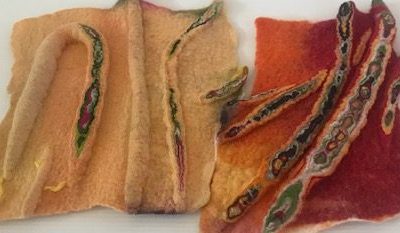One of the key elements to promoting quality felting is the provision of quality workshops to impart skills and techniques. Whilst part of the felting journey is the discovery of your own individual style and look, these foundation workshops will give participants the skills and importantly, the confidence to pursue their own path.
Our tutors are passionate about ensuring the highest quality in their own felt work and sharing their knowledge with other Feltwest members. They have has taught beginners and extension workshops through to advanced workshops in all manner of felting for many years.
Beginners Workshops
These classes aim to teach the basics of the wet felting technique with merino wool, and how these can be adapted to make differing forms.
At the conclusion of the Wet Felting workshop, the participants will:
- Understand the qualities of ‘good felt’
- Understand the difference between a pre-felt, and fully felted piece
- Understand how and why wool felts, and factors affecting different shrinkage rates
- Understand that wool from different sheep breeds can be felted and will produce felt of differing qualities
- Be able to pull wool and lay out finely and evenly
- Be able to wet felt a sample square using the rolling technique
- Be able to full a felt sample by tossing, scrunching and hand rolling, and options of using different tools such as washing boards.
Needle Felting
This session will teach the basics of needle felting and how it can be used to make a 3D figure such as an animal or doll, or to add designs onto a prefelt prior to wet felting. Vimol will introduce the equipment in the needle felter’s tool kit and how to use it. Samples made in this session will include a needle felted design on piece of flat prefelt, and making a needle felted eyeball. After this session you will have the skills needed to use needle felting designs in your wet felting, and the confidence to undertake a more advanced needle felting course making animals or other complex shapes.
Felting Skills Extension
These classes are designed for inexperienced felters, or anyone wanting to refresh their skills or learn a new felting technique. They are ideal for people who have completed the Feltwest beginners workshop and are keen to learn more, or gain the skills and confidence required to undertake a more advanced felting workshop.
Extension classes are kept small to provide a lot of 1:1 support to participants in a relaxed and helpful environment. The sessions will focus on creating one or more samples on a specific technique.
Workshop List
Please check the Home page calendar or on the right hand side of this page to see which workshops are available for this year.
Cracked Earth
In this extension workshop we will learn how to make the fabulous ‘cracked earth’ surface design. Participants will make a unique sample square. Examples will be available to show how this technique can be altered using different shapes and colours, and used to make a unique and interesting texture on bags, sculptures, vessels etc.
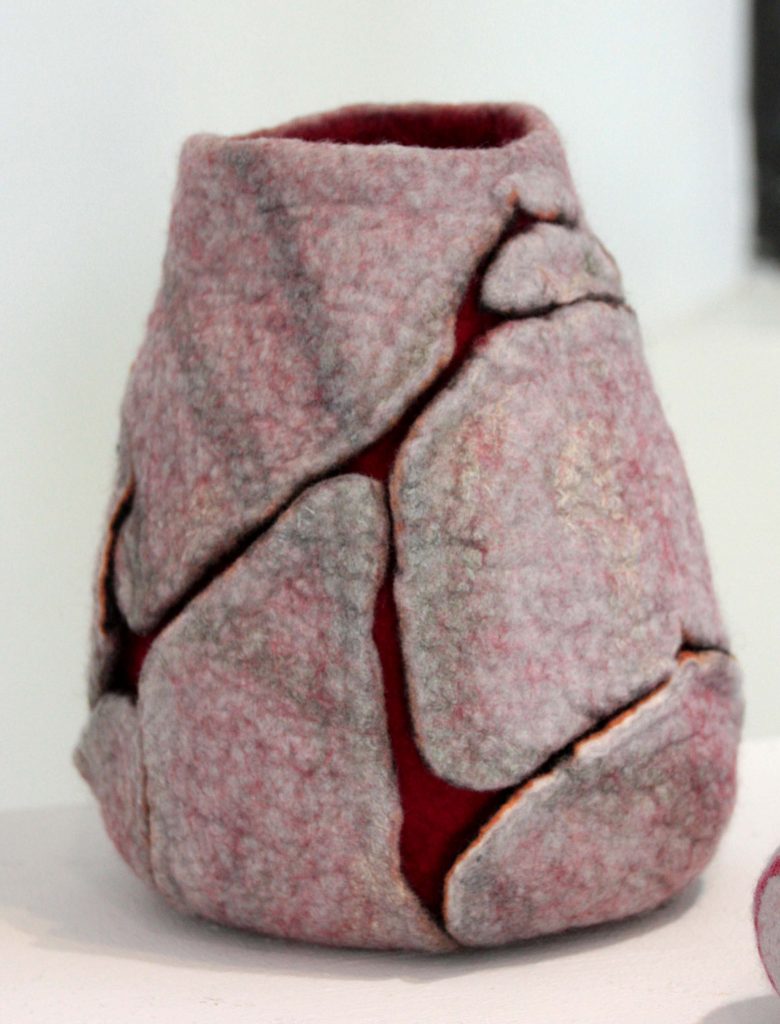
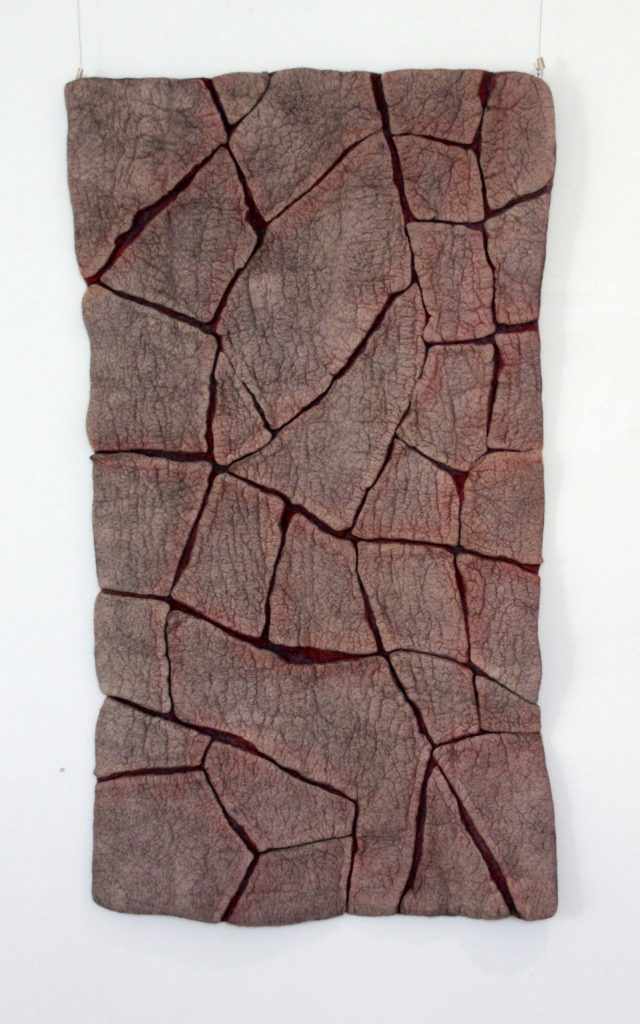
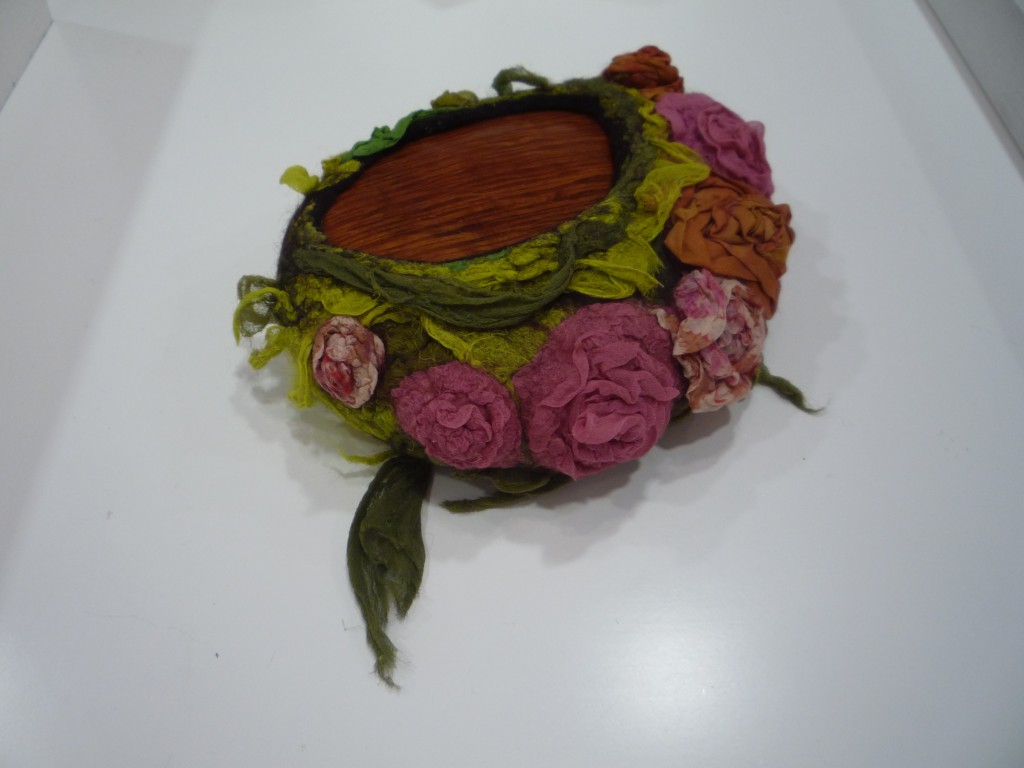
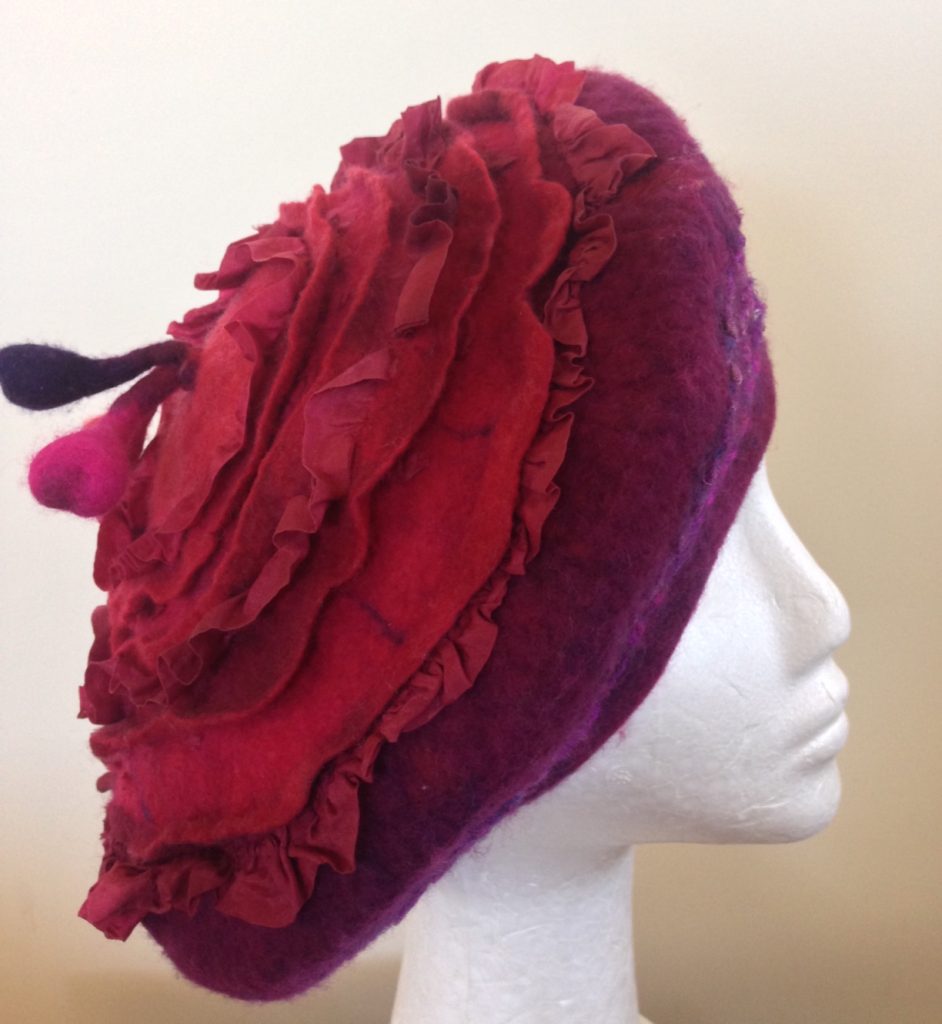
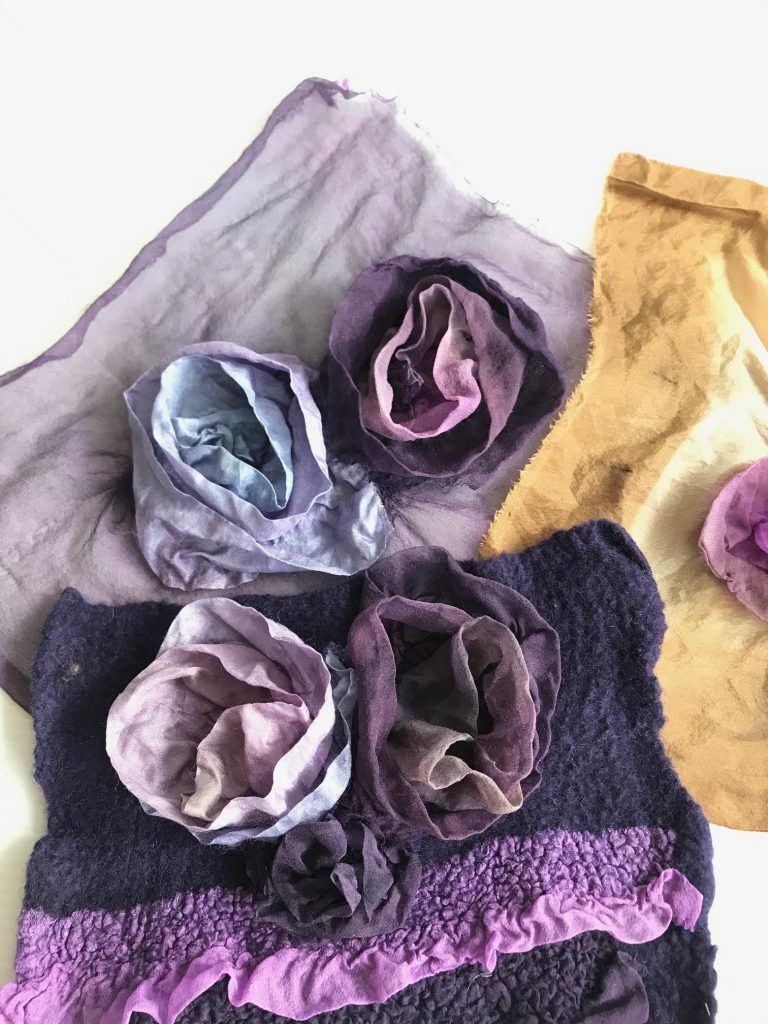
Nuno Frills and Roses
In this session you will learn how to ‘frill up’ the surface design of your felt by including delicate silk roses or frills. These can give a wonderfully sumptuous finish to felt scarves, clothes, hats and bags. Participants will make a felt sample with both roses and frills and discuss how to scale them up for bigger projects.
Pockets Two-ways
Learn how to make two different types of pockets to include in your felt bags – or even in scarves or teapot cosies! Each participant will make two sample squares – a patch pocket and a flap pocket. After this session, participants will have the skills and confidence to add pockets to a range of felt projects.
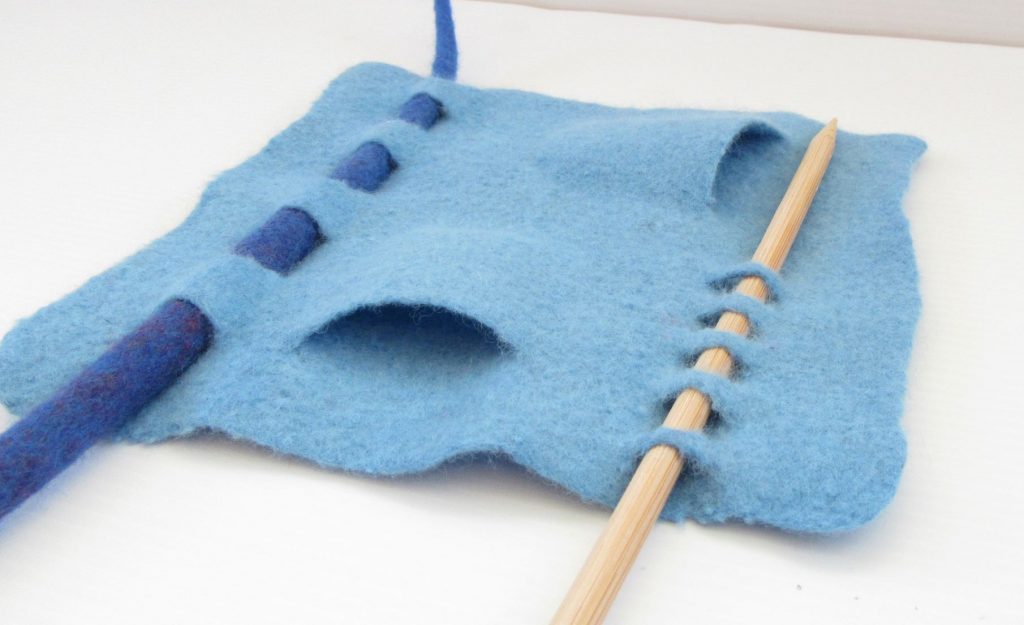




Craters
Felted craters can be so much fun, they can be hollow, or erupting with felt or other textiles and give a fabulous deep and earthy texture to felt wall hangings or sculptures. Join us to make a felt sample with a variety of filled and hollow craters. This workshop will give participants the skills to make a larger piece using these new techniques.
Flaps & Fins
In this workshop we will explore different ways of making felt flaps and fins, and how they can be used to make dramatic features on your felt, or can form flaps on bags and purses. Participants will explore several different methods for making flaps and fins on their sample piece, and will develop the skills and confidence to add flaps and fins to other felt projects.
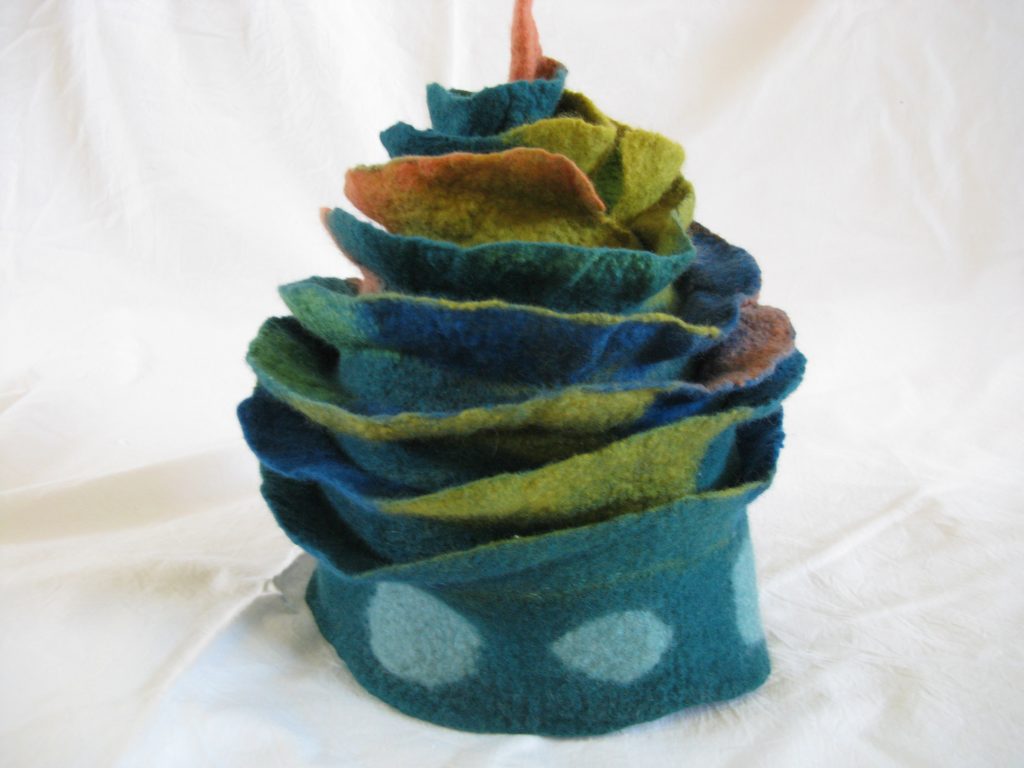
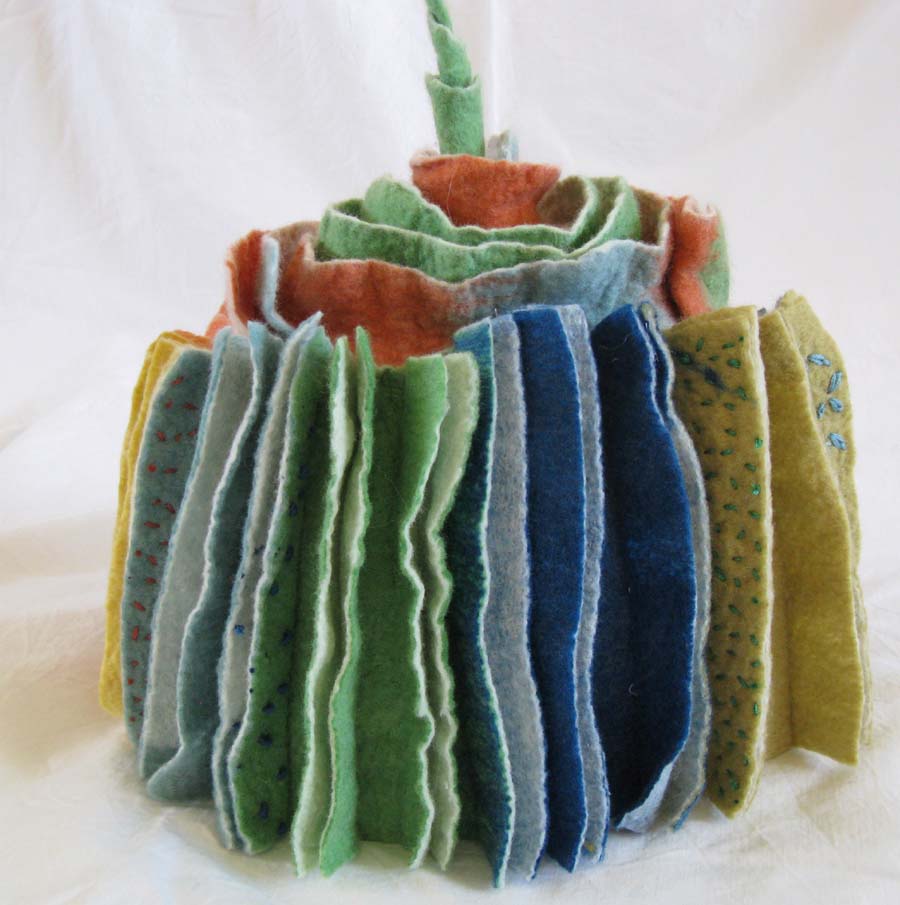
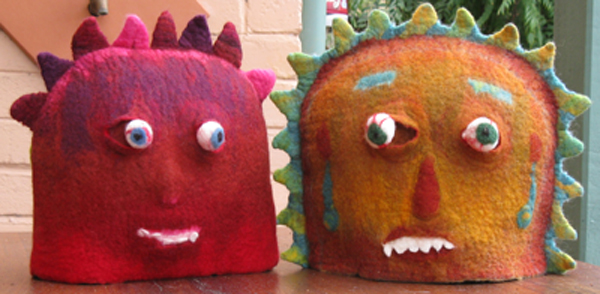
3D Felt
learn how to felt around a resist. A ‘resist’ is simply a physical barrier that keeps layers of wool apart and stops them felting to each other, and is the main way (though not the only way) to create a three-dimensional shape in felt. In this session you will learn how to felt around a resist and how to full and block felt to make a robust three-dimensional object. Tips and techniques will be shared to ensure even distribution of wool without ridges, lumps and holes! You will also learn how to form your felt into a 3D form that is firm and holds its shape when dry. You will make one small 3D sample – eg small vessel or phone case. After this session you will have the skills needed to tackle a larger project such as a bag or hat.
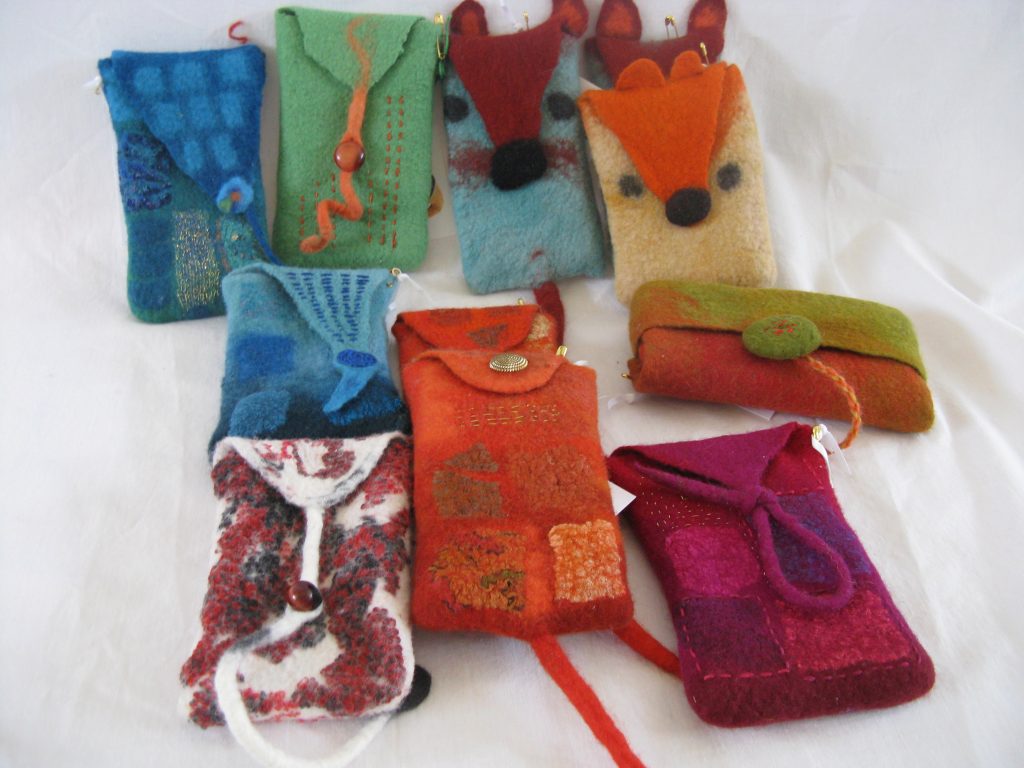
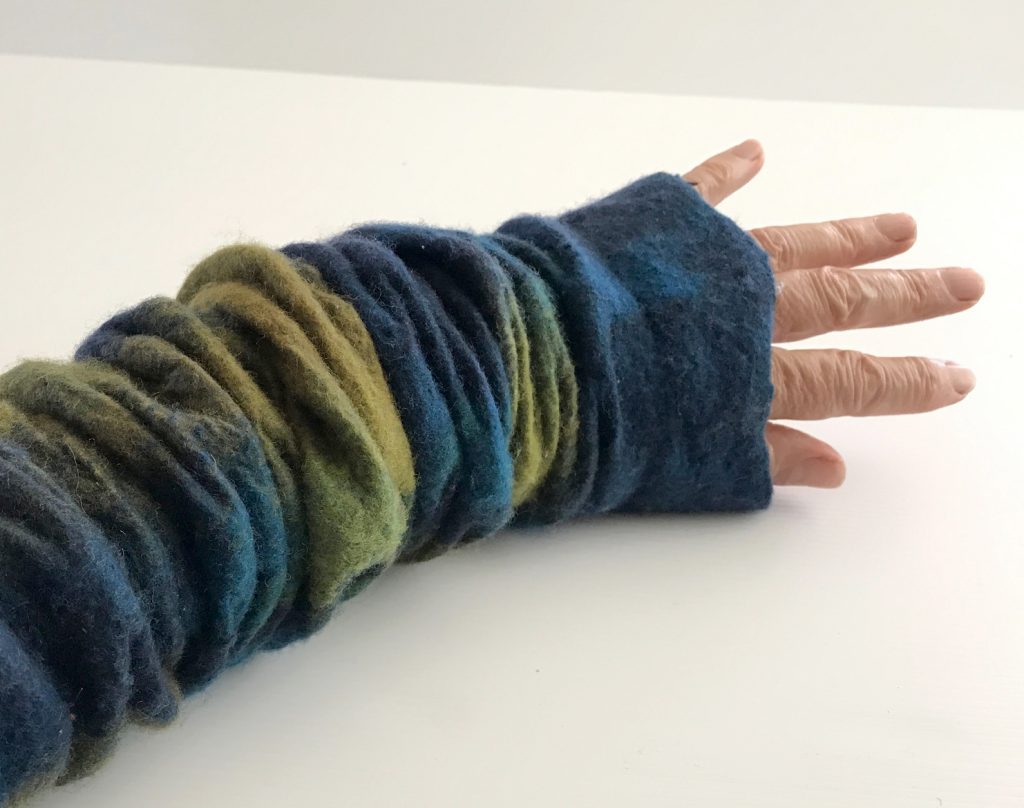
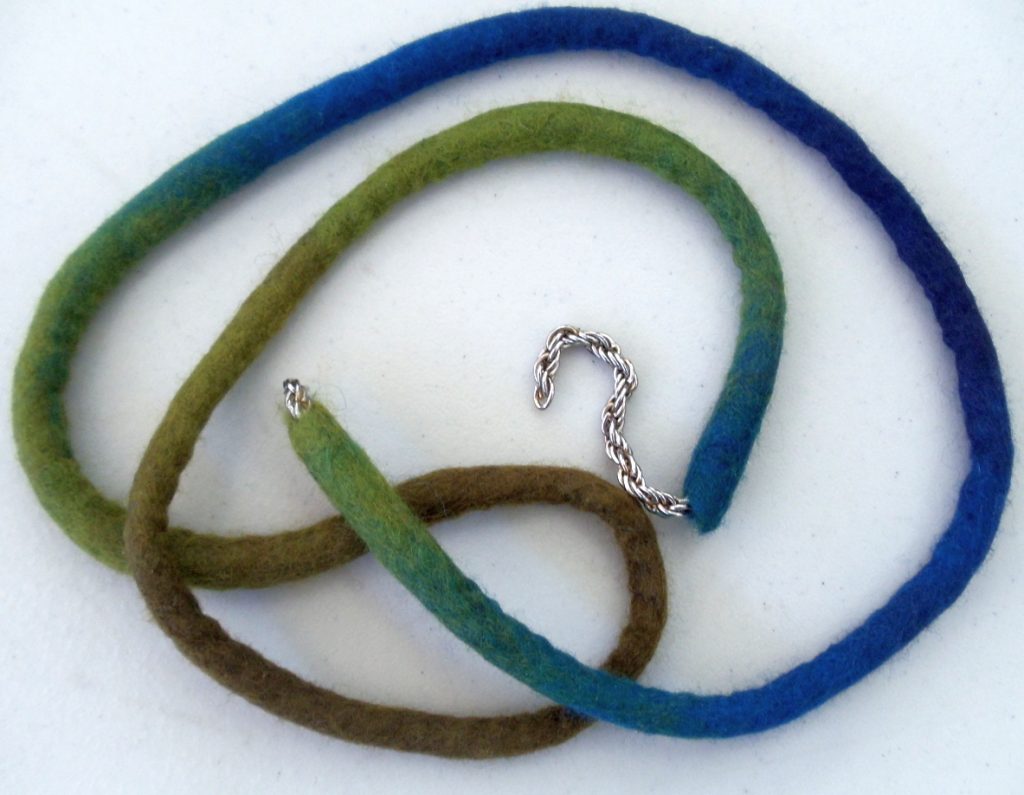
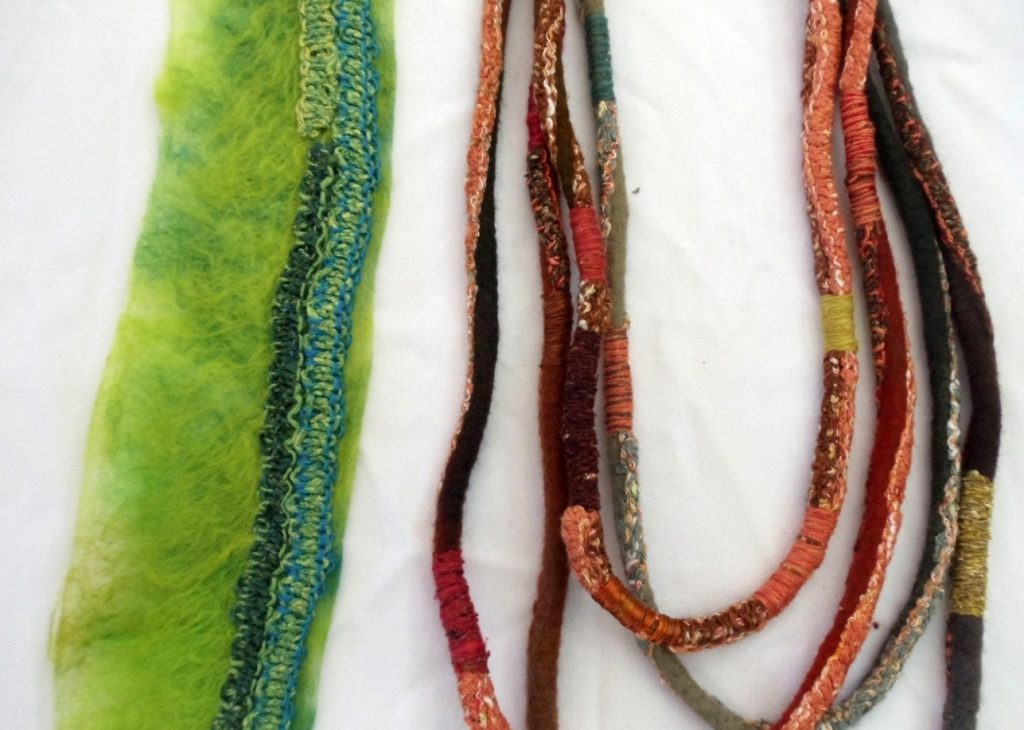
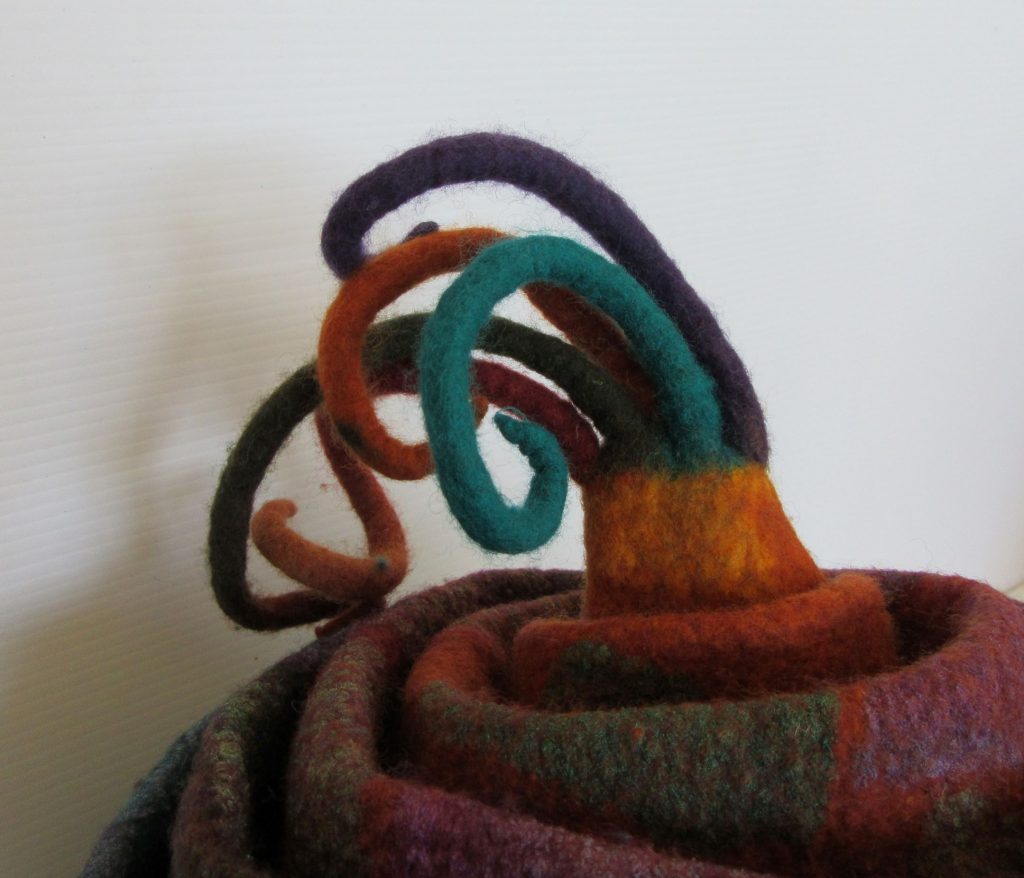
Cords, Spikes & Handles
Learn a variety of quick and simple ways to make felt cords. These can be used to make felt jewellery or felt spikes and handles that can be attached to bags, hats etc. You will learn how to make a firm cord, how to attach them onto a felt base, and how to shape them into spirals. After this session you will have the skills needed to make and attach felt handles or spikes onto a bag or other object.
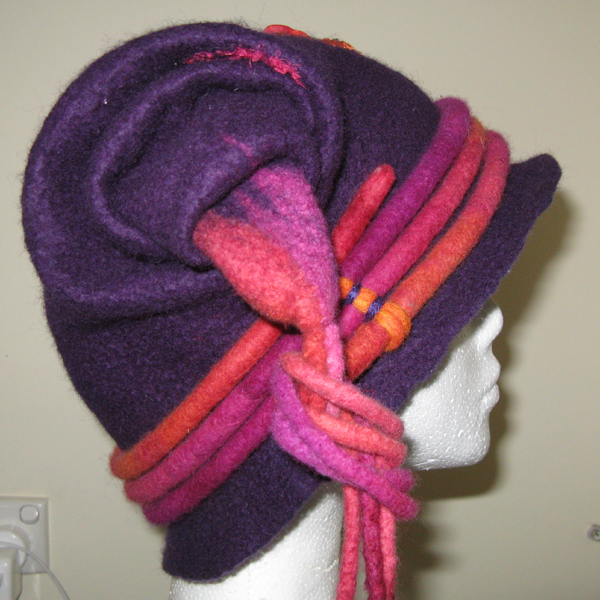

Felting around objects
It is fun to felt around a rock or other object, but there are a few simple tips that you need to know to ensure that the wool is able to shrink properly to form tight, firm felt. Join us for a fun session learning how to lay wool around an object eg, a balloon or ball, creating sufficient space for the felt to shrink around the object to create a well felted piece. Holes can be formed in the felt to expose the object within. One sample piece will be made felting around a rock. This session will give you the skills needed to encase objects in felt to create jewellery, paper weights or other objects.
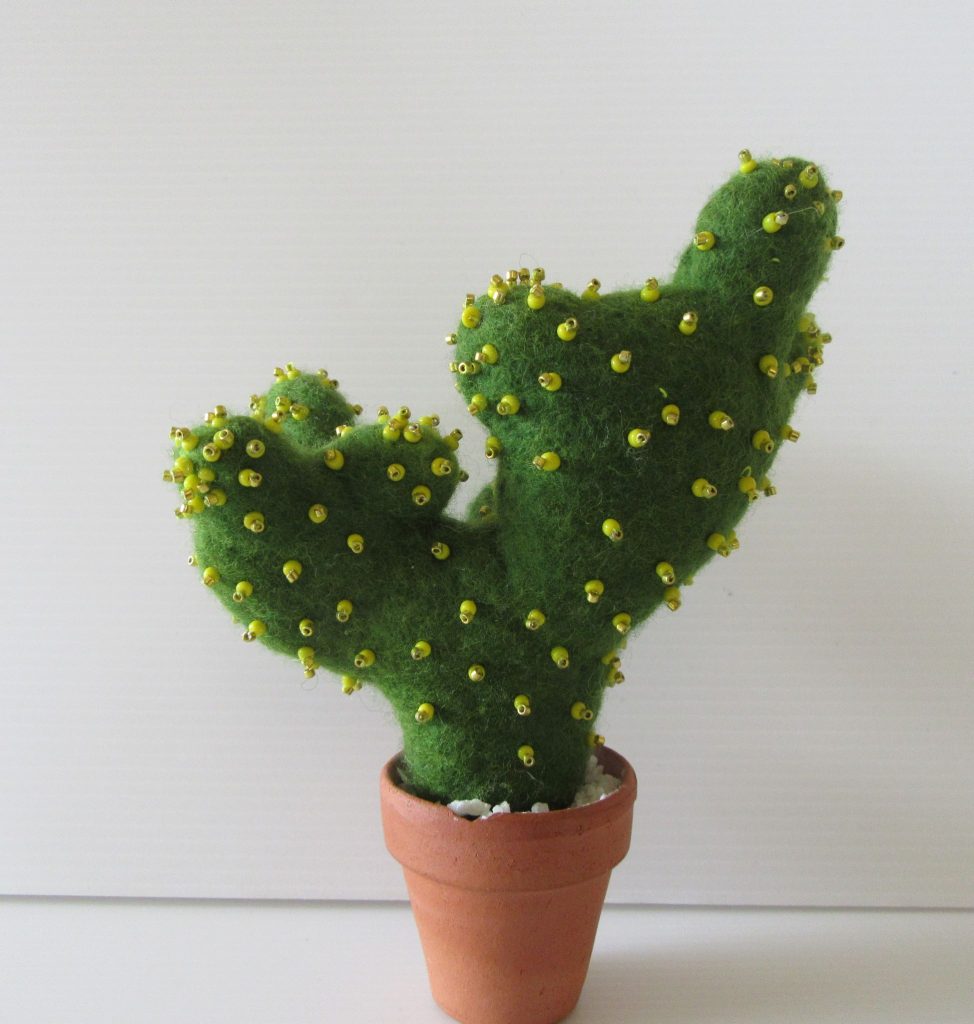
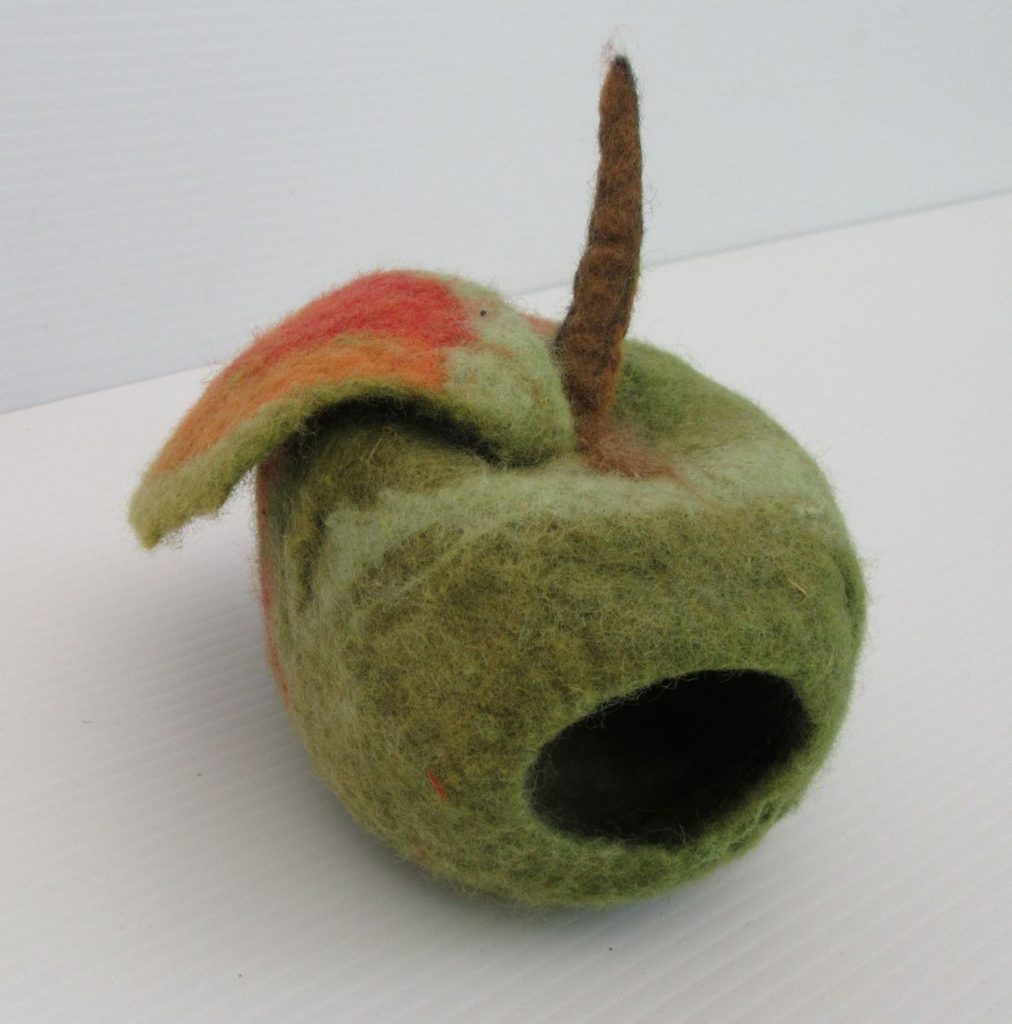
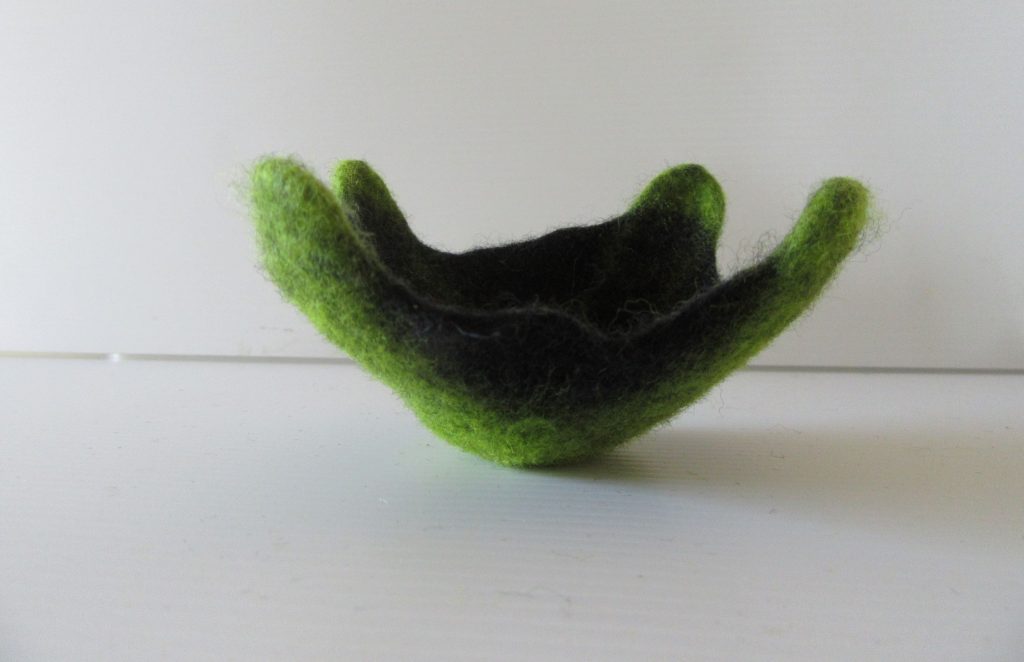
Layering Up Prefelts
learn how multiple layers of prefelt at different stages of the felting process can be used to form three dimensional shapes. A light prefelt will only have shrunk a little bit, whilst a firm prefelt will have shrunk quite a lot. When prefelts at different stages are felted together the differential shrinkages create a three-dimensional form.
Techniques will be shown to attach prefelts that are at different stages of the felting process. One sample flower will be made. This session will give you an understanding of how to use different shrinkage rates in your felt practice, and a range of techniques to attach prefelts together.
Multiple Resists
Use of multiple resists can create exciting and multidimensional shapes in your felt. This session will show how to use multiple resists to make complex forms, and will teach how to get a firm shape to the work, as well as how to incorporate silk fabric to add extra nuno texture. Samples will be provided to demonstrate how these techniques can be applied to create a broad range of effects. We will make a sample pocket that can be turned into a rose. This session will give you the skills needed to create multidimensional felt shapes and to undertake more complex projects.
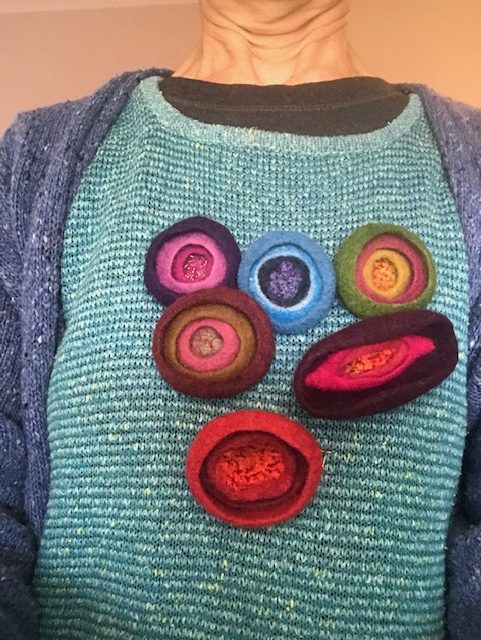
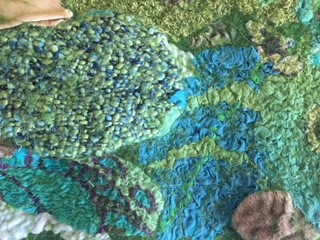
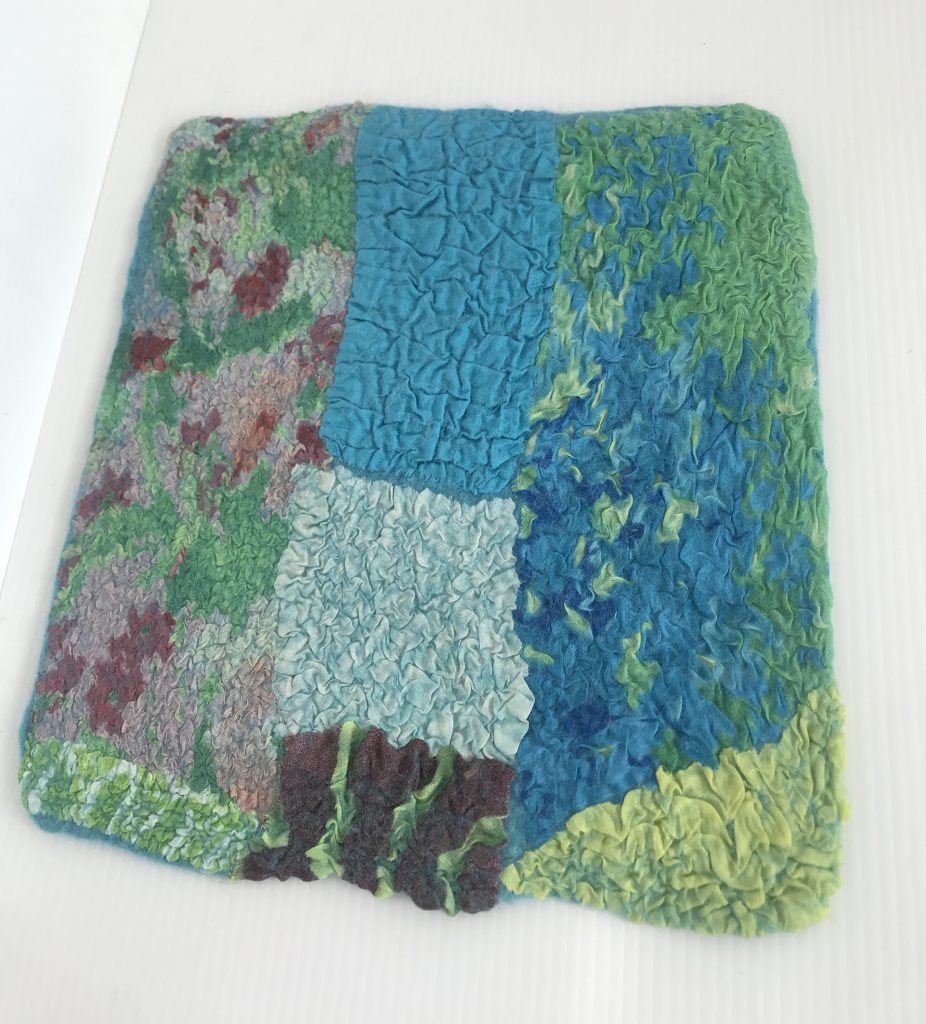
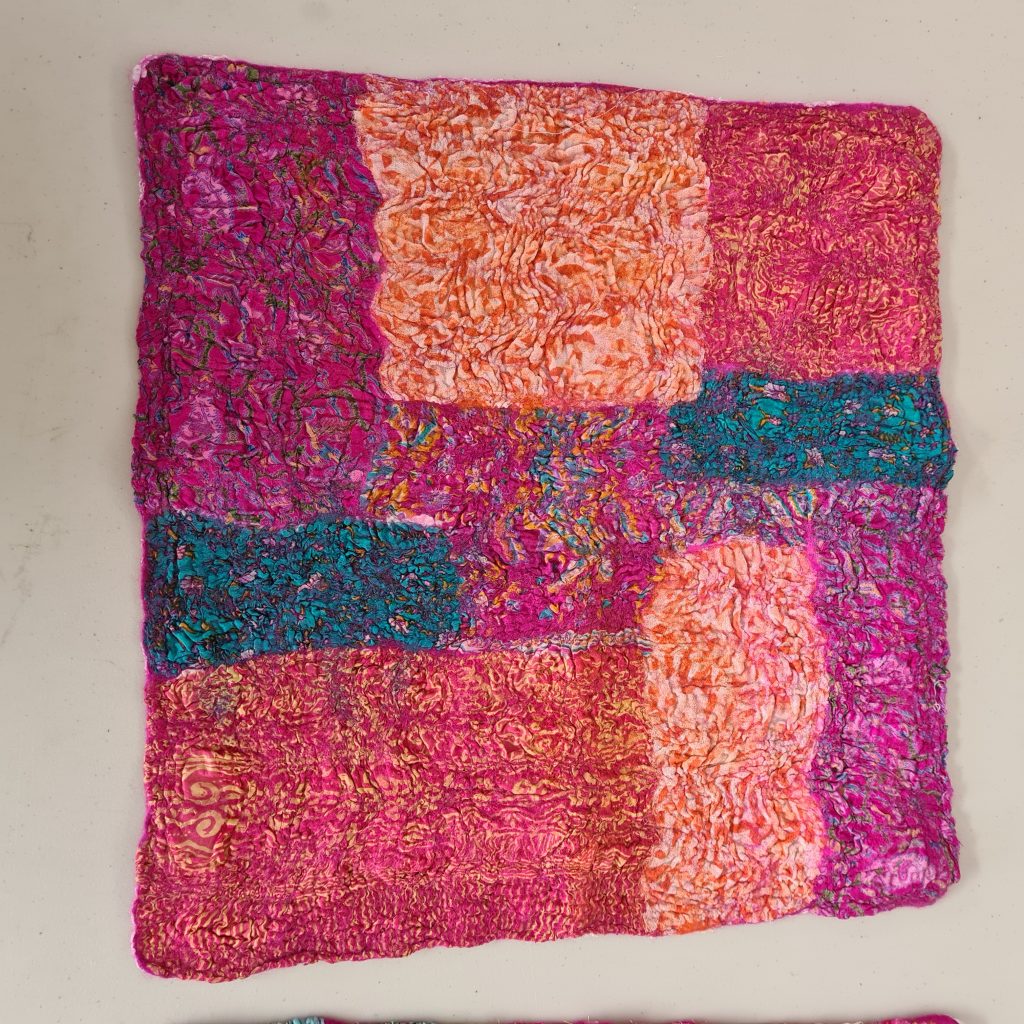
Nuno
Nuno is a technique that incorporates fabric as well as wool, generally creating a soft, draping fabric, however, it can be firm, very textural and tactile. Both results can be used in any creation to make a light flowing garment, or used to make embellishments such as cuffs or collars, or a highly textured sculptural piece. We will bring along a range of samples to inspire your creativity, and we will make two samples to learn techniques for these two types of nuno. After this session you will have the skills needed to tackle a larger project such as a nuno scarf or heavily textured collar.
Cut Snakes
This is a fun, experimental workshop using lots of colour and a wide variety of techniques. Multi-layered solid cords will be made and wound and stitched into prefelts. After felting, you will cut into your work to expose layers of colour, raised surfaces and negative spaces.
